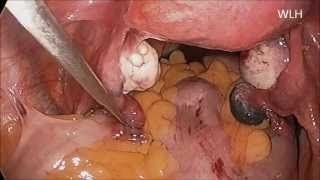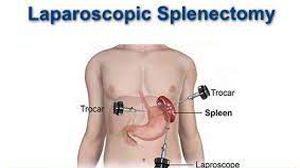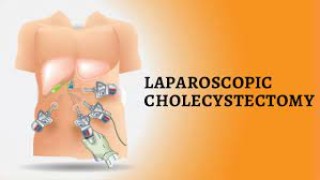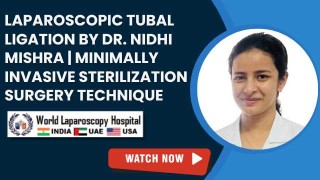Laparoscopic Hysterectomy with Uterine Artery Ligation and Simultaneous Appendectomy
Add to
Share
1,700 views
Report
2 years ago
Description
Women's health concerns are of paramount importance, and advancements in surgical techniques are continuously improving the options available for treating various conditions. When it comes to addressing complex gynecological issues, such as the need for a hysterectomy along with concerns related to the appendix, a cutting-edge solution has emerged: laparoscopic hysterectomy with uterine artery ligation and simultaneous appendectomy. This comprehensive procedure aims to optimize outcomes and promote enhanced women's health. Laparoscopic hysterectomy, a minimally invasive approach to removing the uterus, has become the gold standard in gynecologic surgery. With the aid of small incisions and specialized instruments, surgeons can perform precise and meticulous removal of the uterus, reducing post-operative pain, minimizing scarring, and facilitating a quicker recovery compared to traditional open surgery. The laparoscopic approach also provides better visualization, allowing for greater surgical accuracy and increased patient satisfaction. Incorporating uterine artery ligation into the laparoscopic hysterectomy offers additional benefits. Uterine artery ligation involves the intentional sealing or clamping of the uterine arteries, which supply blood to the uterus. By ligating these arteries, surgeons can minimize bleeding during the procedure, leading to improved surgical outcomes, reduced risk of complications, and a shorter overall surgical time. This technique has been shown to enhance patient safety and optimize the success of the hysterectomy. Simultaneous appendectomy, another crucial component of this comprehensive procedure, involves the removal of the appendix during the same surgical intervention. While seemingly unrelated to gynecological concerns, appendectomy performed concurrently with a hysterectomy can provide several advantages. The presence of an inflamed or diseased appendix can complicate the surgical procedure and potentially lead to post-operative complications if left untreated. By addressing the appendix during the same surgery, potential risks and future complications are minimized, providing a comprehensive approach to women's health and reducing the need for additional surgeries in the future. Combining laparoscopic hysterectomy, uterine artery ligation, and simultaneous appendectomy provides an optimal solution for women who require these procedures. It not only addresses the primary concern of uterine conditions but also ensures the overall well-being and long-term health of the patient. By integrating these techniques, surgeons can offer a streamlined surgical experience, reduced hospital stay, improved post-operative recovery, and an enhanced quality of life for women facing complex gynecological issues. It is important to note that the decision to undergo a laparoscopic hysterectomy with uterine artery ligation and simultaneous appendectomy should be made in consultation with a qualified healthcare professional. They will evaluate your specific medical history, conduct thorough examinations, and determine the most appropriate course of treatment for your individual needs. When it comes to women's health, advancements in surgical techniques are continuously shaping the landscape of treatment options. In the realm of complex gynecological conditions that necessitate both a hysterectomy and concurrent appendectomy, a cutting-edge solution has emerged: laparoscopic hysterectomy with uterine artery ligation and simultaneous appendectomy. This comprehensive procedure aims to optimize outcomes, minimize risks, and enhance women's overall health and well-being. Laparoscopic hysterectomy, a minimally invasive surgical approach to removing the uterus, has revolutionized gynecologic surgery. By utilizing small incisions and specialized instruments, skilled surgeons can precisely and meticulously remove the uterus, resulting in reduced post-operative pain, minimal scarring, and faster recovery times compared to traditional open surgery. The laparoscopic technique provides improved visualization, enabling surgeons to navigate with enhanced precision and accuracy, ultimately leading to improved patient outcomes and satisfaction. Integrating uterine artery ligation into the laparoscopic hysterectomy further enhances the benefits of the procedure. Uterine artery ligation involves the intentional sealing or clamping of the blood vessels that supply the uterus. By effectively managing blood flow during the surgery, this technique reduces the risk of excessive bleeding, improves surgical outcomes, and shortens the overall procedure duration. Uterine artery ligation is associated with a reduced likelihood of complications, contributing to the safety and success of the hysterectomy. Simultaneous appendectomy, a vital component of this comprehensive approach, involves the removal of the appendix during the same surgical intervention. While seemingly unrelated to gynecological concerns, incorporating appendectomy into the procedure offers notable advantages. An inflamed or diseased appendix can complicate the surgical process and potentially lead to post-operative complications if left untreated. By addressing the appendix concurrently with the hysterectomy, potential risks and future complications are minimized, providing a holistic approach to women's health and reducing the need for additional surgeries in the future. The combination of laparoscopic hysterectomy, uterine artery ligation, and simultaneous appendectomy offers a comprehensive solution for women requiring these procedures. It not only addresses the primary gynecological concern but also ensures the overall health and well-being of the patient. By integrating these techniques, surgeons can provide a streamlined surgical experience, reduced hospital stay, expedited post-operative recovery, and an improved quality of life for women facing complex gynecological conditions. It is crucial to consult with a qualified healthcare professional to determine the appropriateness of undergoing a laparoscopic hysterectomy with uterine artery ligation and simultaneous appendectomy. They will evaluate your specific medical history, perform thorough examinations, and provide personalized recommendations tailored to your unique circumstances. In conclusion, the approach of combining laparoscopic hysterectomy with uterine artery ligation and simultaneous appendectomy represents a significant advancement in women's health. This comprehensive procedure offers a multitude of benefits, including minimally invasive surgery, improved surgical outcomes, reduced risk of complications, and a comprehensive resolution of both gynecological and appendiceal concerns. By opting for this advanced surgical approach, women can experience enhanced well-being, shortened recovery times, and a renewed sense of control over their health. Consult with your healthcare provider today to explore this innovative option and take a significant step towards optimized women's health.
Similar Videos





